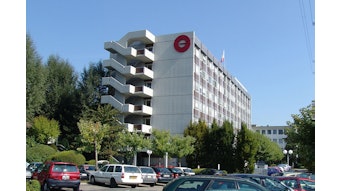Aromatic substances have been extracted from plants for use in medicines, perfumes, and cosmetics since the early history of man. The techniques evolved over the centuries for their isolation have kept pace with man’s technological development. It is probable that collection of aromatic gums and balsams as exudates was initally used. Extractive techniques such as “enfleurage” and pressing of oils from source material followed. The development of steam distillation substantially widened the range of plant essential oils which would be processed, The market for these oils and recognition of their properties as related to species and conditions of growing led to the cultivation of economic crops solely for harvesting these essential oils. In many cases the relatively short critical period for harvesting and the need for rapid workup of the plant material required the use of field stills for maximum yield. This is particularly true for leaf and flower oils which are subject to rapid deterioration. Those oils derived from wood, bark, and seeds can be isolated at processing sites other than the collection sites either in the country or origin (to take advantage of lower labor costs) or in countries of major use where there is more modern and efficient apparatus. Steam distillation equipment in the fields was fairly primitive originally and ranged in capacity from one drum or less to 500 gallons. The distillation could be either a water distillation, a dry steam distillation using false bottom equipment or a grid support, or a water and steam distillation; the type of distillation affects the quality and yield of the product, The stills could be fixed in the ground or mobile, requiring only a source of fuel and cooling water.
In the mint fields of the United States and in the production of clary sage oil, a series of Cobb stills are employed. Trucks and trailer bodies transport the plant material to the stills. The still lid is placed over the top of the trailer body and low pressure steam lines are attached at the bottom of the body. After the distillation process, the truck and trailers are detached from the steam lines and the spent contents are redistributed on the fields for their fertilization value. In the case of clary sage, an intermediate extraction is introduced to recover the valuable “sclareol” after distillation of the essential oil.










